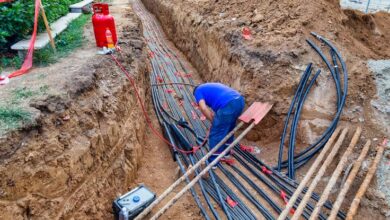Measuring Remote Employee Output: Types of KPIs to Track when Tracking Productivity for Remote Workers

In recent years, the way we work has undergone a significant change, with the rise of remote work altering the traditional office environment. While it brings benefits, it has introduced new challenges for both employees and employers as well. The biggest question of all is, how to monitor remote employees?
As remote work continues to gain popularity, measuring remote employee output has become a critical concern for businesses. To ensure that employees remain productive and engaged while working remotely, organizations must rely on a set of Key Performance Indicators (KPIs) tailored to this unique work arrangement.
Remote work offers flexibility and convenience, allowing employees to work from the comfort of their homes or other remote locations. However, this flexibility also presents challenges in terms of accountability and productivity monitoring. Unlike in a traditional office setting, where supervisors can observe employees’ activities and interactions, remote work requires a more nuanced approach to performance measurement.
In this article, we will explore the key performance indicators that organizations should track to effectively measure remote employee output. These KPIs can help employers assess productivity, collaboration, and overall job performance in a remote work environment.
Output and Deliverables
Let’s begin with the first KPI – pure output and deliverables. Tracking the quantity and quality of work output and deliverables is fundamental in measuring remote employee productivity. This can include completed projects, reports, code commits, or other measurable tasks essential to the employee’s role.
It’s crucial to establish clear expectations for what constitutes successful output. This remote productivity tracking KPI ensures that employees are delivering the expected results efficiently and effectively.
Task Completion Rate
One of the most significant benefits of remote work is the increase in productivity that it is likely to cause. Studies show that remote work goes hand in hand with productivity. One study shows that over 40% of employees feel more productive when working from home. However, how productive is enough for a remote employee? It is important to track task completion rate for this.
Monitoring the rate at which remote employees complete their assigned tasks or projects is a valuable metric for evaluating productivity. This KPI provides insights into an employee’s ability to meet deadlines and stay on top of their responsibilities. It can help identify hitches in workflows and areas where additional support may be a requirement.
Quality of Work
In addition to quantity, the quality of work produced by remote employees is equally vital. This can be assessed through peer reviews, client feedback, or internal evaluations.
Maintaining high-quality work ensures that remote arrangements don’t compromise the overall output’s integrity and effectiveness.
Time Management
Effective time management is a critical skill for remote workers. Employers can utilize KPIs related to how employees allocate their work hours when tracking productivity for remote workers. This includes monitoring time spent on specific tasks or projects.
Tools like time tracking software, and other solutions, can provide valuable data in this regard. It helps employees optimize their time and focus on their most important responsibilities. Know more about Challenges & Solutions of Managing A Remote Workforce.
Communication and Collaboration
Effective communication and collaboration are essential for remote teams. KPIs related to communication frequency, response times, and the use of collaboration tools can shed light on how well employees are staying connected and working together.
These metrics ensure that remote employees remain engaged with their colleagues and the organization’s goals.
Meeting Attendance and Participation
Virtual meetings play a crucial role in remote work. Monitoring employees’ attendance and participation in these meetings can help assess their engagement and alignment with team objectives.
This KPI ensures that employees are actively involved in discussions and decision-making processes, despite the physical distance.
Feedback and Performance Reviews
Regular feedback sessions and Performance Review Phrases are essential for employee development, even in a remote work setup. KPIs related to the frequency and quality of feedback sessions can provide insights into an employee’s progress and growth.
Constructive feedback helps employees understand their strengths and areas for improvement.
Key Performance Indicator Dashboards
Implementing dashboards that provide real-time data on employee performance can be effective during remote productivity tracking. These dashboards can be customized to display relevant metrics, making it easier for managers to monitor remote employee output.
Such real-time insights enable proactive adjustments and strategic decision-making. You may find out more about one such platform, ProHance, here.
Employee Satisfaction and Well-being
Remote work can impact employee satisfaction and well-being. KPIs related to employee surveys and feedback on remote work conditions can help identify any issues that need addressing to improve overall productivity and morale. Monitoring employee well-being is crucial for long-term retention and motivation.
Employee Training and Development
Continuous learning and development are essential for professional growth. Monitoring the completion of training and development programs through KPIs ensures that employees are committed to enhancing their skills. It also indicates the organization’s investment in employee growth.
Data Security and Compliance
Another major question in this field is how to monitor remote employees when it comes to security and compliance in remote work scenarios? With remote work models, ensuring data security and compliance with relevant regulations is vital.
KPIs related to data breaches, security incidents, and compliance checks can help safeguard sensitive information. Maintaining high data security standards is crucial for maintaining trust and legal compliance.
Employee Engagement and Retention
Remote work can challenge employee engagement and retention. KPIs related to employee engagement, such as participation in virtual team-building activities or morale surveys, can help organizations retain valuable talent. High engagement levels lead to increased productivity and job satisfaction.
Work-Life Balance
Remote work can blur the boundaries between work and personal life. KPIs related to employee work hours, overtime, and time off can indicate whether employees are maintaining a healthy work-life balance. Balancing work and personal life is essential for long-term well-being and productivity.
But, how to monitor remote employees when it comes to work-life balance? Time tracking software like ProHance’s solutions can help here.
Adaptability and Resilience
Remote work often requires adaptability and resilience, especially when facing changes and new technologies. KPIs related to an employee’s ability to handle change and adapt to new processes can be valuable indicators of their performance. Adaptability ensures that employees remain effective in dynamic work environments.
Employee Turnover Rate
Monitoring the rate at which remote employees leave the organization is a critical KPI. It can highlight potential issues with remote work arrangements, leadership, or overall job satisfaction. High turnover rates can be costly and disruptive, making this metric essential for improving remote work conditions.
To Sum Up
Measuring remote employee output requires a thoughtful approach that goes beyond traditional office-based performance evaluations. Employers must consider tracking productivity for remote workers with a diverse set of KPIs. These KPIs must ideally account for the unique challenges and opportunities presented by remote work.
Proficiently monitoring these KPIs can help organizations fine-tune their remote work setups, and also enhance overall efficiency. In doing so, they can foster high levels of engagement and motivation among employees in their remote roles, further boosting their output and satisfaction.
Leveraging tools like ProHance for tracking and analyzing these KPIs can streamline the process and provide valuable insights for performance improvement.



